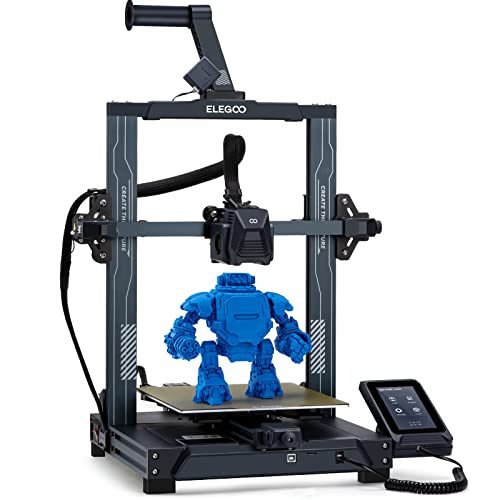When it comes to 3D printer filament, the choices might seem overwhelming at first. But don’t worry! Here’s a simple overview to help you understand the different types of 3D printer filament out there.
PLA (Polylactic Acid) is a favorite among beginners. It's easy to work with, doesn't warp, and comes in a rainbow of colors. Plus, it’s made from cornstarch, so it’s biodegradable, which is a nice bonus. If you’re printing models, prototypes, or anything decorative, PLA is a solid choice.
ABS (Acrylonitrile Butadiene Styrene) is a bit tougher and more heat-resistant than PLA. It’s great for functional parts or items that need to withstand some wear and tear. Just keep in mind that it can warp a little more, so you'll want a heated bed and good ventilation when printing with ABS.
PETG (Polyethylene Terephthalate Glycol) combines the best of both worlds. It’s strong and flexible, plus it’s less likely to warp than ABS. PETG is perfect if you need sturdy parts that can handle some stress without breaking. It’s also food-safe, which is great for making kitchen gadgets!
Finally, let’s not forget about specialty filaments, like TPU (Thermoplastic Polyurethane) and nylon. TPU is super flexible and perfect for things like phone cases or wearable items. Nylon is strong and durable, making it perfect for parts that need to hold up in tough conditions. With so many options for 3D printer filament, you can easily find the right fit for your projects!
Factors to Consider When Choosing Filament
When it comes to picking the right 3D printer filament, there are a few key factors that can make or break your printing experience. First up, think about the material type. Each filament has its own traits. PLA is great for beginners because it's easy to work with and environmentally friendly. ABS is more durable and heat-resistant but can be a bit tricky when it comes to warping. If you're looking for something special, PETG combines the best of both worlds—it’s strong and pretty easy to print!
Next, consider the diameter of the filament. Most 3D printers use either 1.75mm or 2.85mm filaments. Make sure to check your printer’s specs to get the right size. Using the wrong diameter can lead to clogs and failed prints, which is a headache you don’t want.
Don’t forget to think about the color and finish! Filament comes in a rainbow of colors and even various finishes, like glossy or matte. Whether you want a vibrant purple or a sleek black, there’s a filament to match your project. Some brands even offer specialty options like glow-in-the-dark or metallic finishes that can really bring your creations to life.
Lastly, pay attention to the price and quality. Cheaper filaments might save you money upfront, but they can lead to frustrating print failures. Investing in a reputable brand will save you time and hassle. You want something that’s consistent and reliable, so check reviews and ask for recommendations.
Prusament Prusa Orange PETG Filament 1.75mm 1kg
Get vibrant and durable prints with this high-quality Prusa Orange PETG filament designed for smooth feeding and reliable performance
Product information
$45.39
Product Review Score
4.31 out of 5 stars
225 reviewsProduct links
Best Filaments for Different Projects
When diving into the world of 3D printing, choosing the right 3D printer filament is key to getting great results. Different projects call for different materials. Here’s a quick guide to help you pick the best filament for whatever you have in mind.
If you’re just starting out or looking to make something fun, PLA is a solid choice. It’s super user-friendly and works well with most printers. PLA comes in a ton of colors and finishes, making it perfect for toys, decorations, and simple prototypes. Plus, it’s biodegradable, so it’s a bit easier on the planet!
For projects that require durability, consider ABS. This 3D printer filament is stronger and can handle more stress than PLA. It’s great for functional parts, like phone cases or mechanical components. Just keep in mind, ABS can warp a bit during printing, so having a heated bed helps a lot.
If you’re aiming for something truly unique, try PETG. This filament offers the durability of ABS but is easier to work with, making it perfect for items that need to withstand wear and tear. It’s also food-safe, which means you can use it for kitchen items or containers. Plus, its clear finish can add a cool touch to your prints!
Flexibility is key in some projects, and that’s where TPU comes in. This flexible filament lets you create items like phone cases or wearable accessories that need to bend without breaking. It can be a little trickier to print, but the results are worth it if you need something that moves with you!
Creality K2 Plus 3D Printer with Dual AI Cameras
Experience precise 3D printing and smart monitoring with the Creality K2 Plus featuring dual AI cameras for effortless creations
Product information
$1,499.00
Product Review Score
4.7 out of 5 stars
19 reviewsProduct links
Tips for Storing and Handling Filament
Storing and handling your 3D printer filament properly can make a big difference in print quality. Filament can absorb moisture from the air, which can lead to clogs, bubbles, and uneven prints. Here are some tips to keep your filament in top shape:
If you notice your filament feels brittle or looks dusty, it might be time for a fresh spool. Keeping up with maintenance not only keeps your filament in good shape but also ensures you're always ready for your next printing project!





